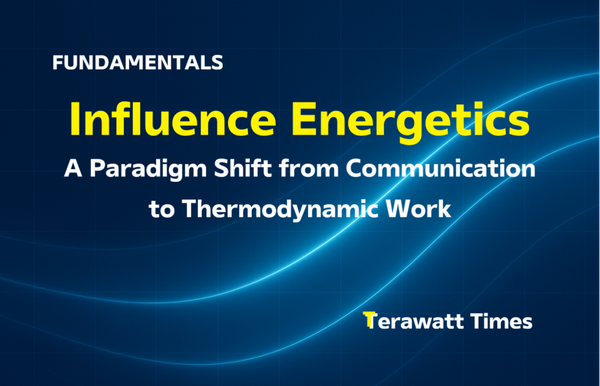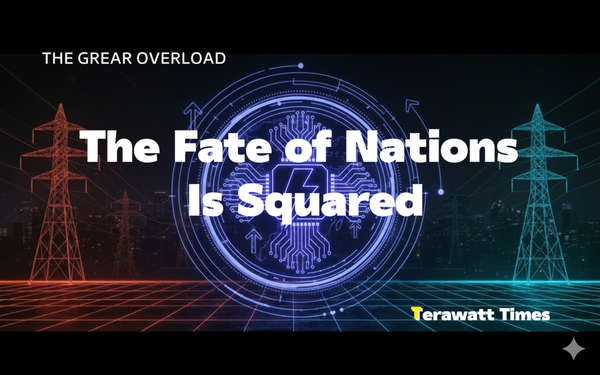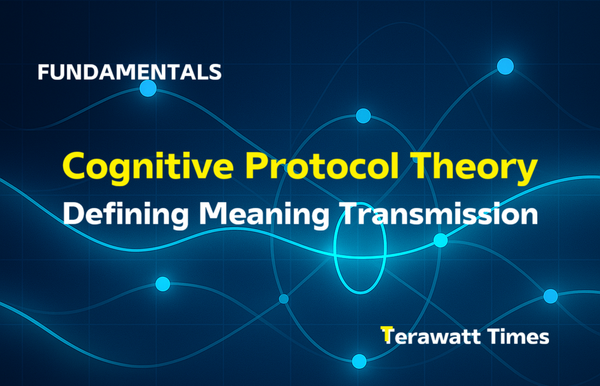The T² Decision Stack: A Field Guide to the New Compute Order

Disclaimer:
This article provides methodological frameworks and decision-making tools for energy infrastructure evaluation and project execution. Example calculations are based on reasonable assumptions and industry-typical parameters, designed to illustrate framework logic rather than serve as investment advice for specific projects. Actual applications require adjustment of parameters based on project-specific conditions.
MERIT™ evaluation framework provides more precise project ratings and is available through professional consulting.
Summary
The field guide translates energy-compute theory into an actionable methodology for decision-makers. It defines how site selection, storage deployment, and contract design together determine the true cost, resilience, and sovereignty of large-scale compute infrastructure. The playbook replaces traditional ROI models with a ten-dimensional T² evaluation framework that quantifies location quality across grid access, policy stability, flexibility, transparency, and community acceptance—revealing risks that simple energy-price comparisons overlook.
Beyond evaluation, it demonstrates how energy storage transforms from a cost center into a sovereignty engine, improving both project returns and systemic flexibility. Subsequent sections show how poor PPA design can erase those gains, detailing clause-level strategies to control inflation, volume, and termination risk.
It teaches investors, policymakers, and operators how to turn incomplete spreadsheets into full-stack decisions—bridging economics, engineering, and governance in the era of the new compute order.
Opening: The Hidden Cost of Incomplete Evaluation
A cautionary tale in site selection
Consider a typical scenario that plays out across energy infrastructure projects: Two candidate locations for a 100MW data center, both appearing attractive on paper.
Location A (traditional favorite):
- Electricity price: $35/MWh — lowest in region
- Renewable energy mix: 85% — excellent ESG profile
- Tax incentives: 10-year full exemption — compelling economics
- Traditional ROI model shows: $15M annual savings
Location B (traditional runner-up):
- Electricity price: $46/MWh — 31% more expensive
- Renewable energy mix: 78%
- Tax incentives: Standard rates only
- Appears significantly costlier
Any competent CFO would select Location A. The spreadsheet is clear: lower energy costs, better green credentials, superior tax treatment.
The fatal blind spot: load flexibility
What the traditional evaluation missed was a critical operational dimension — the grid's ability to accommodate variable loads without penalty. This isn't about peak capacity; it's about dispatch flexibility, congestion management, and the real-time balancing mechanisms that determine operational costs beyond the energy commodity price.
When we apply a comprehensive evaluation framework that captures this dimension:
| Dimension | Location A | Location B | Why It Matters |
|---|---|---|---|
| Grid Flexibility (L) | 0.3 | 0.7 | Dispatch capability |
| Transmission (T) | 0.4 | 0.7 | Congestion exposure |
| Imbalance Penalty | $8/MWh | $2/MWh | Real operational cost |
| Comprehensive Score | 0.49 | 0.71 | Integrated assessment |
The hidden cost emerges:
Location A's poor flexibility score translates into operational reality:
- Imbalance volume (grid cannot accommodate variations): ~8% of total load
- Penalty rate (regional typical): $8/MWh
- Annual hidden cost: 100MW × 8,760h × 90% load factor × 8% imbalance × $8/MWh = $5.0M per year
This single overlooked factor consumes 83% of the tax savings that made Location A attractive.
Location B's calculation:
- Imbalance volume: ~2%
- Penalty rate: $5/MWh
- Annual hidden cost: $0.8M per year
20-year Total Cost of Ownership:
- Location A: $720M (cheap energy) + $60M (hidden costs) = $780M
- Location B: $850M (expensive energy) + $10M (hidden costs) = $860M
The supposedly "expensive" location is only 10% more costly when all factors are considered — and carries significantly lower risk (higher scores in regulatory stability and flexibility).
This is not bad luck. This is what happens when evaluation frameworks are incomplete.
The difference between $780M and $860M may seem manageable. But consider the compounding effect:
- If Location A faces policy reversal (high subsidy dependency, unstable regulatory environment)
- If grid upgrade costs materialize (low initial capacity score)
- If PPA counterparty defaults (inadequate risk assessment)
The "savings" evaporate, replaced by crisis management and stranded costs.
Who Should Read This — And Where to Start
This playbook is structured for three distinct audiences, each with different entry points:
If you are a policymaker: → Start with Part 1 (understand how enterprises evaluate your jurisdiction) + Part 4 (recognize systemic risks). Your question: "How can we make our region attractive for large-scale energy infrastructure investment?" Our answer: It's not just about low electricity prices or generous tax breaks. It's about comprehensive T² sovereignty — the full spectrum of factors that determine project viability and risk.
If you are a corporate executive: → Follow the complete path: Part 5 (execution roadmap) → Part 2 (storage strategy) → Part 4 (risk management). Your question: "We need to deploy 500MW of compute capacity in 18 months. Where do we start?" Our answer: Start with Phase 1 evaluation using the frameworks in this playbook, then progress systematically through design, contracting, and execution.
If you are an investment manager: → Focus on Part 1 (asset screening) + Part 2 (storage returns) + Part 3 (contract structures). Your question: "How do we identify infrastructure arbitrage opportunities and evaluate asset quality?" Our answer: Look beyond surface-level metrics. The highest returns often come from jurisdictions with improving T² trajectories, not just those with currently high scores.





